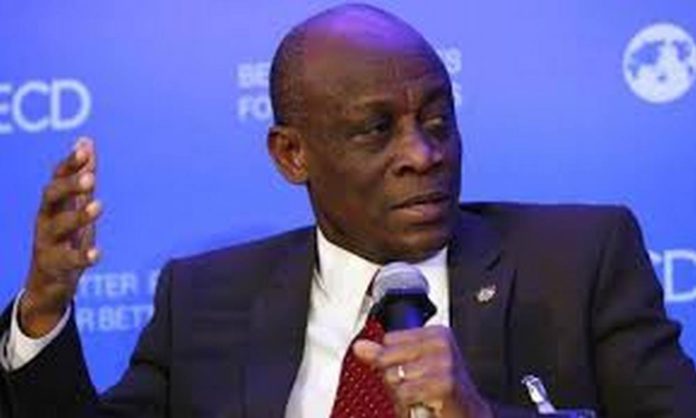
- Introduction
The topic for discussions in recent days is the authorization given to the Ministry of Finance (MOF) to set up the Agyapa special purpose vehicle (SPV) to own (in perpetual transfer from assignment from the Mineral’s Development Fund [MDF]) and leverage Ghana’s gold royalties for equity and loan transactions. The controversy to date surrounds the incorporation of Agyapa in a tax haven (when Ghana is potentially on a money laundering watchlist); the calculation of US$1 billion as the present value for annual flows of US$150 million for 15 years; and non-availability of information that now become public to Parliament, as required by the 1992 Constitution of the Republic.
This article examines the Agyapa saga as part of several unconventional methods of borrowing by the Government in the last two (2) years or more. The article makes the point that the projected high levels of budget deficit and public debt may be making it difficult for Government to continue using the conventional instruments in domestic and foreign markets to borrow to finance the budget deficit.
- Rising budget deficit and public debt levels
The background to the loan perspective includes the rise in Ghana’s fiscal deficit and public debt levels between, approximately, 11 to 13 percent and 70 to 73 percent of GDP, respectively, by the end of the Financial Year (FY )2020.
- Low 2020 Budget Estimates: The 2020 Budget projected the level of budget deficit as only 4.9 percent, rising to a rapid increase of 6 to 9 percent of GDP. While the 2020 Budget did not give an estimate for public debt, the Government gives the end-2019 Public Debt as 63 percent—which gives an increase of 7 to 10 percent of GDP for FY 2020.
- Deficit, debt and COVID-19: The Government and other commentators have consistently stated that in their public debate that the increase in public debt may be as result of the COVID-19 pandemic. This is debatable since, in applying for the IMF COVID-19 Rapid Credit Facility (RCF) or loan, the Government gave the increase in costs from COVID-19 as 2.5 percent—and later revised it to about 3 percent in the 2020 Mid-Year Review and Supplementary Budget.
- Non-COVID budget gaps: Given the difference between 4.9 and 11 or 13 percent, there seem to be a gap of 6 to 9 percent that is due to revising regular budget items that include the financial sector bailout costs, energy sector arrears, compensation, and interest payments.
It is necessary to note that the entire projected cost of COVID-19 is fully covered by the IMF RCF Loan of US$1 billion and other facilities from the World Bank and other donors, Also, it is noted that institutions such as the International Monetary Fund (IMF), Fitch and Moodys Ratings, and the World Bank have drawn our attention to the fiscal risks underlying the worsening fiscal performance for our country.
- Unconventional borrowing and measures
As noted, it appears that the Government is already finding it difficult to borrow through traditional sources and is resorting to unconventional methods.
- 2017 US$1 Billion Domestic Bond: Upon coming into office in 2017, the government issued a large Dollar ($)-denominated and sole-sourced domestic bond at a rate of 19 percent. The rationale for this significant borrowing, despite the issuance of a Sovereign Bond, it was believed to have been done to raise funds to finance the expenditures relating to campaign promises, notably the Free Senior High School (FSHS) program.
- SYNOHYDRO Loan Facility: The most significant bilateral non-bank facility or loan taken by the Government was from SYNOHYDRO, a Chinese firm that has been in Ghana for over a decade. It is to provide about US$1 billion loan in exchange for the right to mine bauxite which proceeds was to be used to repay the loan.
- Mortgage of GETFund flow: In 2018, Ministry of Finance took a loan in exchange for future flows from the Ghana Education Trust Fund (GETFund), presumably to fund the high commitment to education expenditures that is unstainable to finance from normal budget and borrowing sources.
- Discounting arrears: After the set-off, rather than cash payments for uncompleted contracts depicted as arrears, in the 2017 Budget, the government used “off-budget” mechanisms to settle large portions of about Ghc5 billion at a discount—effectively, a subsidy from the contractors.
- BOG Deficit Financing: Recently, Bank of Ghana (BOG) extended a facility of ten and half billion Ghana Cedis (GHc10.5 billion) to the Government. While the general view is that it is in support of COVID-19 costs, the Bank MPC report notes that the facility is extended to alleviate Government’s difficulty in assessing the markets for funds and potential high interest costs.
This means, the MPC admits to explicit deficit financing exceeding 50 percent of the projected 2020 Budget deficit, compared to only 5 percent allowed in the Fiscal Responsibility Act, 2018 (Act 982)—a level not reached in nearly 40 years since the 1980s Economic Recovery Program (ERP) or Structural Adjustment Program (SAP) reforms.
The Government has also used unconventional methods in debt management to augment their unconventional contracting of loans.
- “Tap-Ins” on domestic markets: on several occasions, the government has not been able to realize the monthly amount required in the tenders or auctions (called “uncovered” auctions) in the domestic markets to meet rollovers of existing debt and augment GRA and other sources of revenues, including loans. While this occurs periodically in budget administration, it is unusual in the context of the “unprecedented fiscal consolidation” that the government claims to have achieved in nearly four (4) years. As the 2020 Budget notes (2020 Budget, p 34; par. 138)
“The higher-than-programmed” financing (especially from domestic sources) stems mainly from the frontloading of financing requirements to meet Government expenditures and other debt service obligations, including for the settlement of “uncovered Government auctions” following substantial revenue shortfalls” (emphasis added).
- Extension of debt repayment dates: Another so-called biting “success” is extending the repayment period of existing debt, particularly “non-concessional sovereign bonds” to long periods of fifteen (15) to forty (40) years. As a result, the nation continues to pay interest and suspends the repayment of principal—while it piles on new debt. Estimates show that Ghana now spends about 120 percent of revenues to pay interest and repay principal—meaning it is engaged in unplanned borrowing to pay existing debt.
This approach contrasts with the use of petroleum revenues, through the Sinking Fund to redeem or repay domestic and foreign bonds—as with repaying US$500 million of the total US$750 million commitment on Ghana’s first 2007 Bond under the immediate past NDC government. The government suspended the plan to continue with this approach to a more efficient and effective debt management from 2017.
- Exit of non-resident investors: When Ghana launches a new or existing domestic bond (unlike treasury bills), it allows foreigners to take part in the bidding. While this makes the markets for domestic bonds liquid, a worrying aspect is the tendency to “exit” with notice. The exit and non-participation put pressure on budget financing and, since they are foreign flows, on reserves and stability of the currency. This is the context to read meaning into the following statement from the Budget:
- Conclusion
It seems obvious, after nearly US$5 billion of conventional loans that has increased the debt stock (excluding the BOG financing that is also deemed unconventional), that the urgency surrounding the Agyapa deal may be from pressure to finance the budget. The fiscal deficit, borrowing, and debt trends noted above, among others in the financial market indicators, are worrying.
The worry is from the contradictions in (a) the stance of unprecedented fiscal consolidation over a nearly four-year period; (b) the consequent heavy borrowing that is now twice the debt stock at end-2016; (c) a projected high budget deficit of nearly 13 percent for end-2020; and (d) the relative stability of financing the deficit that came with the setting up of the Book-Building and Ghana Fixed Income Market in August 2015.
These domestic market initiatives appear to be achieving their goal of improving liquidity to finance the deficit and, potentially, other public and private sector financing. As the following extract from the 2020 Budget notes (p. 46 par. 195-199)—
“The GFIM continues to make strides to become the preferred investment platform. From a humble trades value of Ghc5.22 billion when the market was established four years, August 2015, activities on the market have shot up tremendously to Ghc43.82 billion (October 2019) over this short period of its existence … It is, therefore, clear that with the right programs to develop the ecosystem of this market, GFIM will be able to achieve the intended heights of being the most preferred bond market in the sub-region”.
The use of non-conventional approaches to financing the deficit and accumulating debt is proving expensive and risky. However, it will not go away without an approach that takes account of the right balance among the revenue, expenditure, arrears/deficit, borrowing, and debt elements of the Budget. It is also clear that any attempt to separate so-called “headline” items from an “all-inclusive” budgeting merely leads to complacency and lack of focus on critical underlying fiscal and economic trends.






